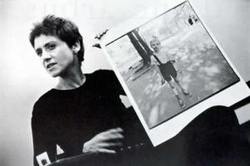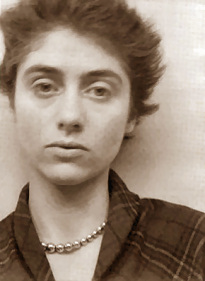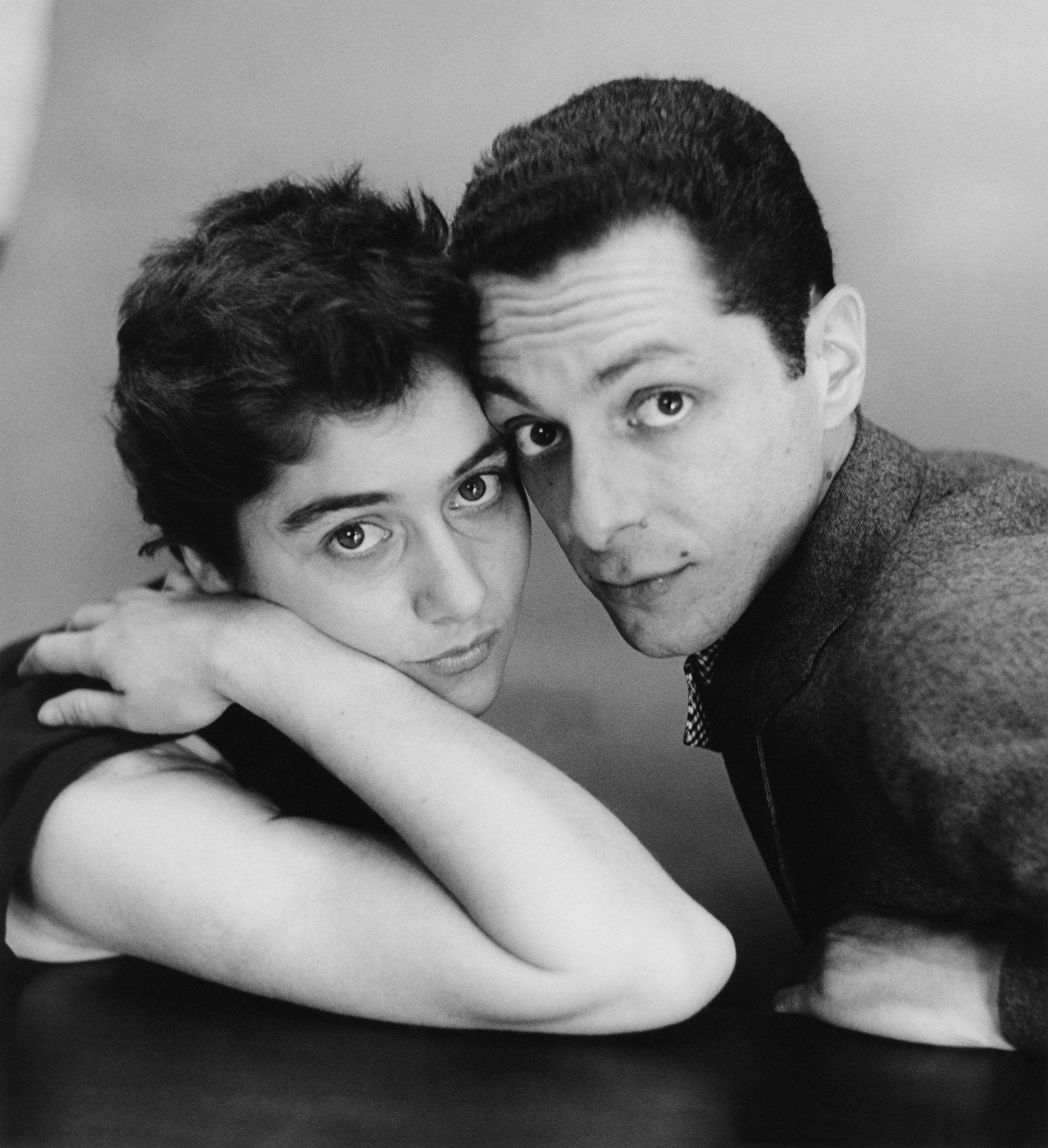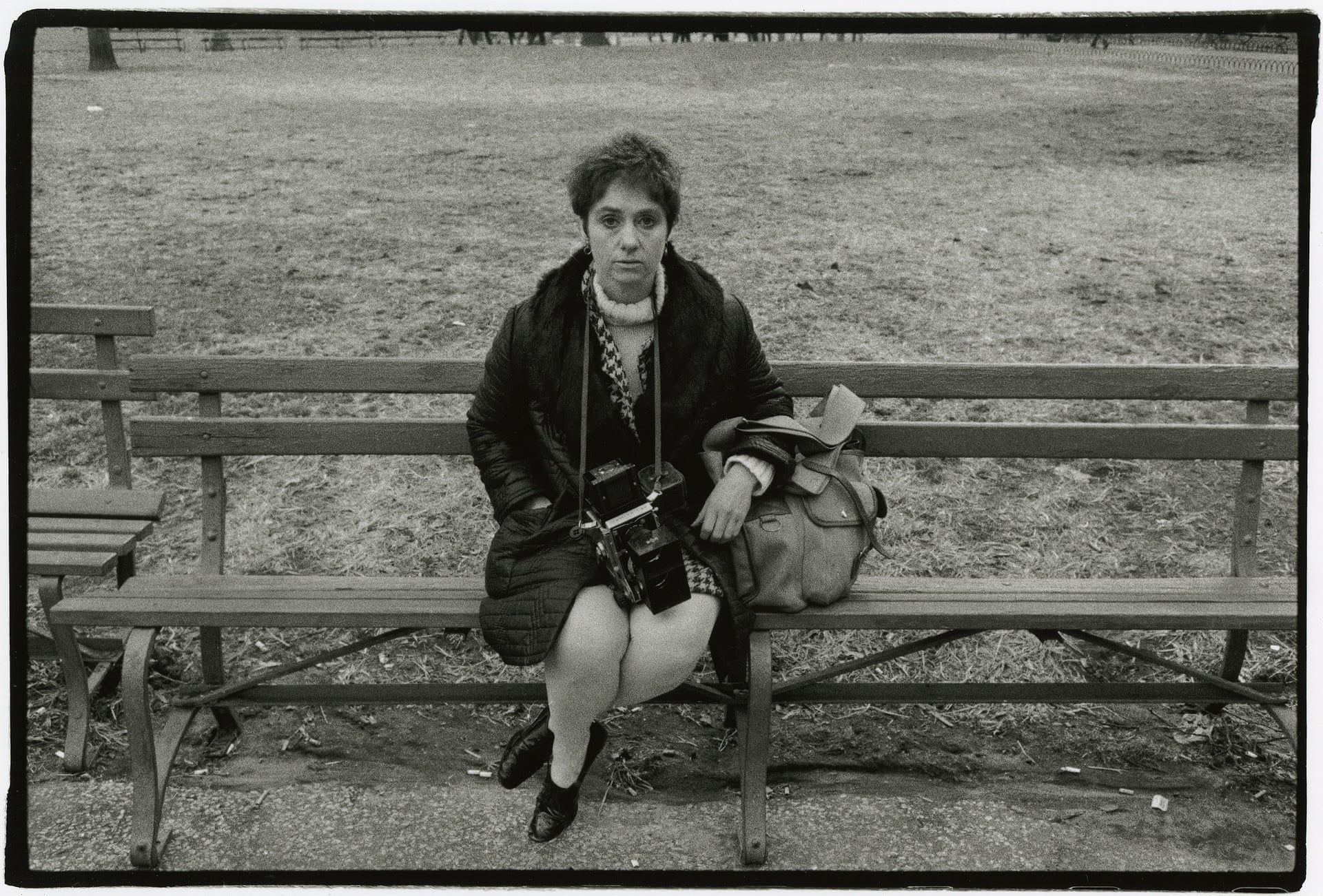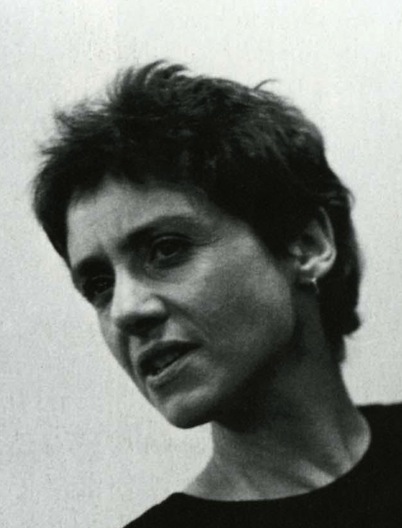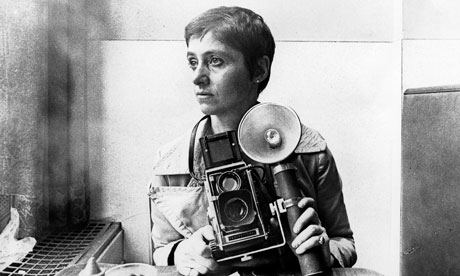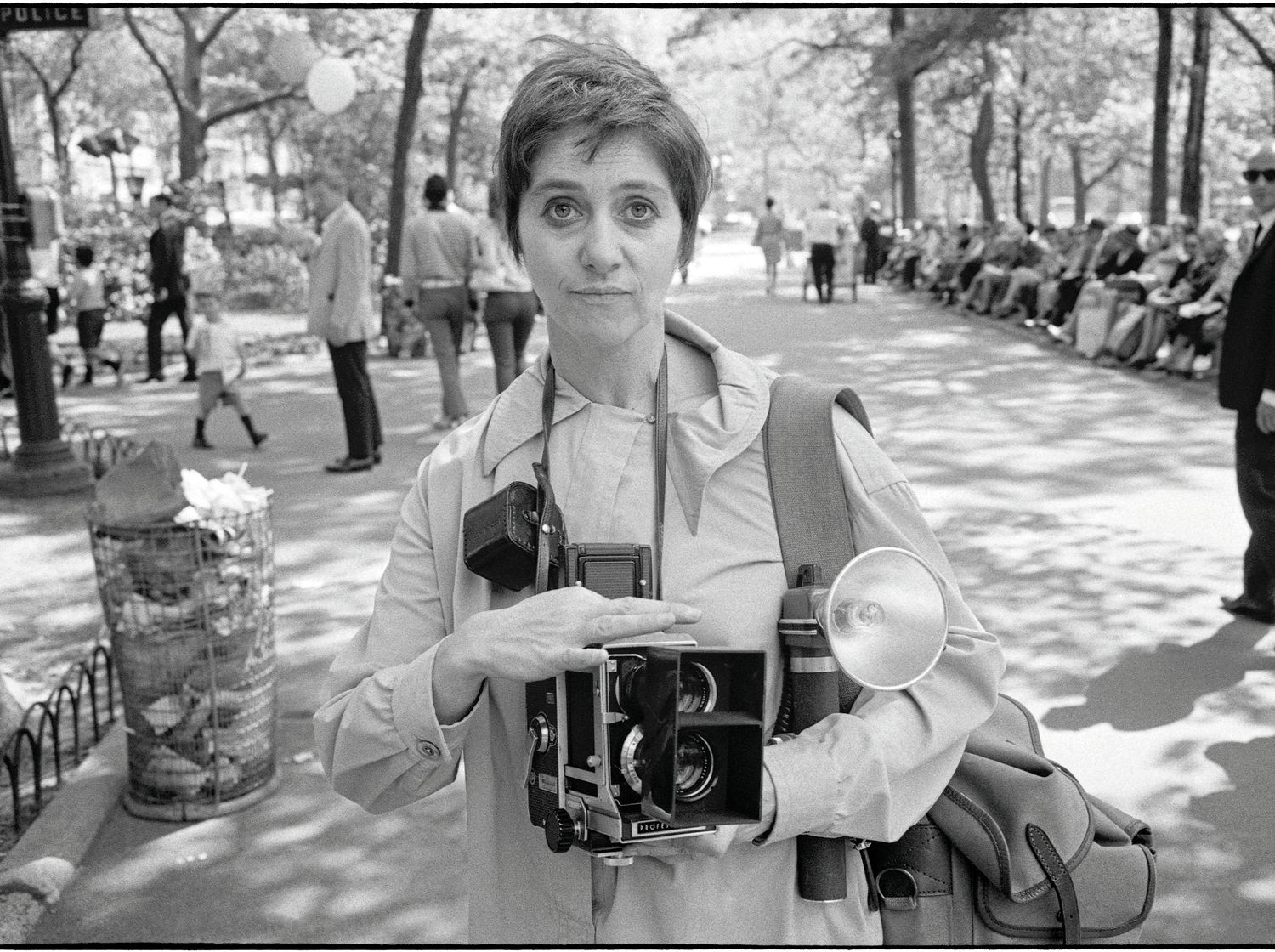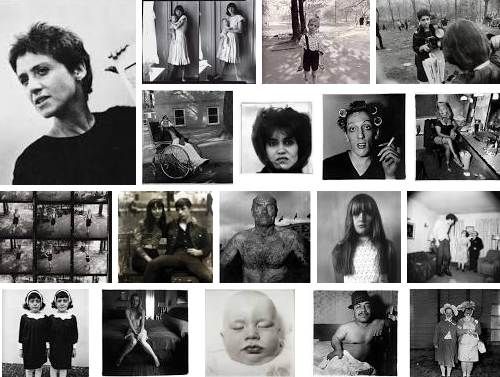She fell in love with future actor Allan Arbus at age 14, and married him in 1941, soon after turning 18, despite her parents' objections. When her husband began training as a photographer for the US Army, he shared his lessons with Diane. As a husband-wife team, the Arbuses became successful in the fashion world. As Diane began to take her own photographs, she took formal lessons with Lisette Model at The New School in New York. Edward Steichen's noted photo exhibit, The Family of Man, included a photograph credited to the couple. Together the Arbuses had two daughters, photographer Amy Arbus and writer and art director Doon Arbus. Allan and Diane Arbus had separated by 1959.
After separating from her husband, Arbus studied with Alexey Brodovitch and Richard Avedon. Beginning in 1960, Arbus worked extensively as a photojournalist, her photos appearing in Esquire, The New York Times Magazine, Harper's Bazaar and Sunday Times magazines, among others. Her first public work was an assignment by Esquire editor and art director Robert Benton. Published under the title, "The Vertical Journey: Six Movements of a Moment Within the Heart of the City", consisting of six portraits of an assortment of New Yorkers. Arbus would go on to collaborate with Hayes and Benton (and Benton's successors) for 31 photographs in 18 articles.
Identical Twins, Roselle, New Jersey, 1967, on the cover of Diane Arbus: An Aperture Monograph. Arbus' early work was created using 35mm cameras, but by the 1960s Arbus adopted the Rolleiflex medium format twin-lens reflex. This format provided a square aspect ratio, higher image resolution, and a waist-level viewfinder that allowed Arbus to connect with her subjects in ways that a standard eye-level viewfinder did not. Arbus also experimented with the use of flashes in daylight, allowing her to highlight and separate her subjects from the background.
In 1963, Arbus received a Guggenheim Fellowship grant. Arbus received a second Guggenheim grant in 1966. The Museum of Modern Art, in 1967, staged Arbus' first museum show as the New Documents show which included the work of Garry Winogrand and Lee Friedlander. She also taught photography at The Parsons School for Design in NYC and Hampshire College in Amherst, Massachusetts.
MoMA curator John Szarkowski prepared to stage a retrospective in 1972, but the accompanying Diane Arbus catalog proposal was turned down by all major publishing houses. Aperture magazine's Michael E. Hoffman accepted the challenge, producing an influential photography book. The Aperture monograph has since been reprinted 12 times, selling more than 100,000 copies. The MoMA retrospective traveled throughout North America attracting more than 7 million viewers. Also in 1972, Arbus became the first American photographer to be represented at the Venice Biennale. Arbus' photograph Identical Twins is tenth on the list of most expensive photographs having sold in 2004 for $478,400.
In 2006, the film Fur: An Imaginary Portrait of Diane Arbus was released, starring Nicole Kidman as Arbus. Though it is a highly fictionalized account of a period in her life, it used Patricia Bosworth's book Diane Arbus: A Biography as a source.
Arbus' artistic career initiated in 1959 when she began studying photography with Lissete Model. With her new and innovative style, Diane recieved the Guggenheim felowship in 1963 as well as in '66. A year after her first fellowship, her work was recognized by John Szarkowski who formed Arbus' first exhibit at the Museum of Modern Art. As Arbus' career progressed, a portfolio of 10 photographs was made in 1970 that created her first series of limited editions. While at the top of Diane's progression in the art world and her ongoing exploration of the limits of photographic art, her career was smashed to an immediate end by her suicide on July 26th, 1971.
Arbus' work impacts the photography world with a sharp attack on the boundaries of what is considered to be "proper" or "tasteful" art. In 1972, Diane Arbus was the first American photographer to be exhibited at the Venice Biennale.
Per NY Marble Cemetery, she is not buried there.
She fell in love with future actor Allan Arbus at age 14, and married him in 1941, soon after turning 18, despite her parents' objections. When her husband began training as a photographer for the US Army, he shared his lessons with Diane. As a husband-wife team, the Arbuses became successful in the fashion world. As Diane began to take her own photographs, she took formal lessons with Lisette Model at The New School in New York. Edward Steichen's noted photo exhibit, The Family of Man, included a photograph credited to the couple. Together the Arbuses had two daughters, photographer Amy Arbus and writer and art director Doon Arbus. Allan and Diane Arbus had separated by 1959.
After separating from her husband, Arbus studied with Alexey Brodovitch and Richard Avedon. Beginning in 1960, Arbus worked extensively as a photojournalist, her photos appearing in Esquire, The New York Times Magazine, Harper's Bazaar and Sunday Times magazines, among others. Her first public work was an assignment by Esquire editor and art director Robert Benton. Published under the title, "The Vertical Journey: Six Movements of a Moment Within the Heart of the City", consisting of six portraits of an assortment of New Yorkers. Arbus would go on to collaborate with Hayes and Benton (and Benton's successors) for 31 photographs in 18 articles.
Identical Twins, Roselle, New Jersey, 1967, on the cover of Diane Arbus: An Aperture Monograph. Arbus' early work was created using 35mm cameras, but by the 1960s Arbus adopted the Rolleiflex medium format twin-lens reflex. This format provided a square aspect ratio, higher image resolution, and a waist-level viewfinder that allowed Arbus to connect with her subjects in ways that a standard eye-level viewfinder did not. Arbus also experimented with the use of flashes in daylight, allowing her to highlight and separate her subjects from the background.
In 1963, Arbus received a Guggenheim Fellowship grant. Arbus received a second Guggenheim grant in 1966. The Museum of Modern Art, in 1967, staged Arbus' first museum show as the New Documents show which included the work of Garry Winogrand and Lee Friedlander. She also taught photography at The Parsons School for Design in NYC and Hampshire College in Amherst, Massachusetts.
MoMA curator John Szarkowski prepared to stage a retrospective in 1972, but the accompanying Diane Arbus catalog proposal was turned down by all major publishing houses. Aperture magazine's Michael E. Hoffman accepted the challenge, producing an influential photography book. The Aperture monograph has since been reprinted 12 times, selling more than 100,000 copies. The MoMA retrospective traveled throughout North America attracting more than 7 million viewers. Also in 1972, Arbus became the first American photographer to be represented at the Venice Biennale. Arbus' photograph Identical Twins is tenth on the list of most expensive photographs having sold in 2004 for $478,400.
In 2006, the film Fur: An Imaginary Portrait of Diane Arbus was released, starring Nicole Kidman as Arbus. Though it is a highly fictionalized account of a period in her life, it used Patricia Bosworth's book Diane Arbus: A Biography as a source.
Arbus' artistic career initiated in 1959 when she began studying photography with Lissete Model. With her new and innovative style, Diane recieved the Guggenheim felowship in 1963 as well as in '66. A year after her first fellowship, her work was recognized by John Szarkowski who formed Arbus' first exhibit at the Museum of Modern Art. As Arbus' career progressed, a portfolio of 10 photographs was made in 1970 that created her first series of limited editions. While at the top of Diane's progression in the art world and her ongoing exploration of the limits of photographic art, her career was smashed to an immediate end by her suicide on July 26th, 1971.
Arbus' work impacts the photography world with a sharp attack on the boundaries of what is considered to be "proper" or "tasteful" art. In 1972, Diane Arbus was the first American photographer to be exhibited at the Venice Biennale.
Per NY Marble Cemetery, she is not buried there.
